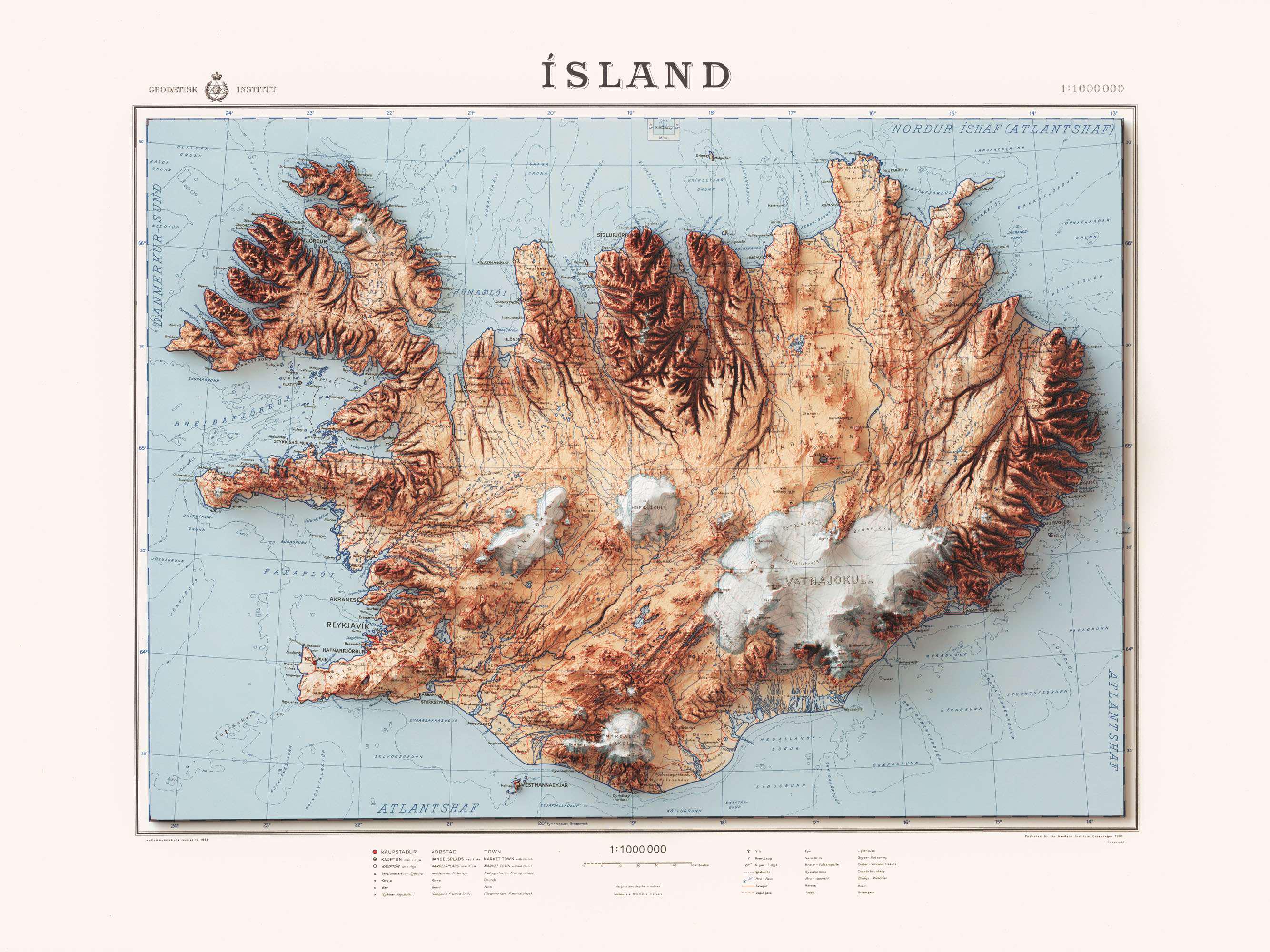Iceland 1963 Map with Shaded Relief


Marcus Rodriguez
Historical Geography Expert
Marcus Rodriguez specializes in historical cartography and geographic data analysis. With a background in both history and geography, he brings unique...
Geographic Analysis
What This Map Shows\nThe 1963 map of Iceland featuring shaded relief offers a unique perspective on the country's diverse topography. The shaded relief technique enhances the visual representation of elevation and terrain, allowing viewers to appreciate the dramatic landscapes of this Nordic island. From the towering glaciers to the rugged mountains and expansive lowlands, this map provides a snapshot of Iceland's geological features as they were understood in the early 1960s.
Deep Dive into Iceland's Topography\nIceland, known for its striking contrasts, is a product of volcanic activity and glacial erosion. The island is home to some of the most active volcanoes in the world, including Hekla and Katla. The map from 1963 illustrates these features, showcasing how the landscape has been shaped over millennia. Interestingly, about 11% of Iceland is covered by glaciers, with Vatnajökull being the largest, encompassing around 8% of the country’s total area.
The shaded relief on this map highlights the elevation changes across the island. For instance, the central highlands, which reach elevations above 1,000 meters, contrast sharply with the coastal lowlands where most of the population resides. This topographical variation plays a crucial role in Iceland's climate, biodiversity, and human settlement patterns.
Moreover, the geothermal activity in Iceland contributes to its unique landscapes. The map indicates areas of significant geothermal energy, particularly in the southwest, where hot springs and geysers, such as the famous Geysir and Strokkur, are located. This geothermal energy not only shapes the physical landscape but also provides a sustainable energy source for residents and industries alike.
Interestingly, Iceland’s topography influences its weather patterns. The country experiences a subarctic climate, characterized by cool summers and relatively mild winters, largely due to the surrounding North Atlantic Ocean. The interplay of mountains and valleys creates microclimates, leading to diverse weather conditions across the island. For example, the south coast is typically wetter than the north, which is reflected in vegetation and agricultural practices.
Regional Analysis\nThe map allows us to observe distinct regional differences across Iceland. The southwestern region, including the capital city Reykjavik, is relatively flat and fertile, making it ideal for urban development and agriculture. The presence of geothermal energy resources here has led to significant population growth and urbanization.
Moving northward, we encounter the volcanic zones, such as the area surrounding Lake Myvatn. This region is characterized by its dramatic landscapes, including volcanic craters and rich biodiversity. The map indicates the rugged terrain and potential hazards associated with volcanic activity, which is a constant threat in this part of Iceland.
In contrast, the eastern fjords present a different landscape with steep cliffs and deep inlets. The topography here creates challenges for infrastructure development and transportation. The map illustrates these geographical barriers, which have historically influenced settlement patterns and economic activities, primarily fishing and tourism.
Significance and Impact\nUnderstanding Iceland's topography, as depicted in the 1963 map, is vital for several reasons. First, it informs us about the geological processes that have shaped the island, providing insights into its volcanic history and the ongoing effects of climate change. As glaciers shrink and volcanic eruptions occur, monitoring these changes is critical for both environmental and human safety.
Moreover, the topography has significant implications for biodiversity. The varied landscapes create different habitats, supporting a range of flora and fauna. For instance, the highlands may host unique species adapted to harsh conditions, while coastal areas might support diverse marine life. The map serves as a reminder of these ecological relationships and the importance of preserving Iceland's natural environments.
Finally, with the rise of tourism in Iceland, understanding the topography is essential for sustainable development. The breathtaking landscapes attract millions of visitors each year, but this influx poses challenges for conservation. As we look to the future, the insights gleaned from historical maps like this one will inform land use planning and environmental protection efforts, ensuring that Iceland's natural beauty endures for generations to come.
Visualization Details
- Published
- August 11, 2025
- Views
- 94
Comments
Loading comments...